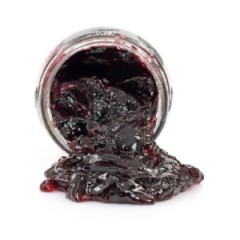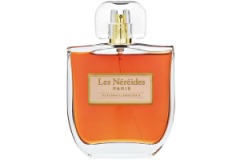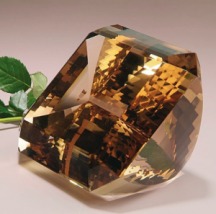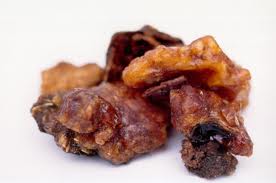A keepsake memento box made of cedar, left in a dusty old attic, only to be found and doused with rum and cognac, then to transform as if by alchemy to something quite different. That is part of the journey you take with Patchouli Antique from Les Néréides, a French perfume house that initially started in the world of expensive, high-end costume jewelry before branching out into perfume. Their fragrances represent their overall ethos of the most basic, simple ingredients, presented in the most refined manner. They eschew expensive or fancy bottling, preferring to opt for a minimalistic aesthetic, both to appearance and, to some degree, the perfume itself.
Patchouli Antique (or Patchouli Précieux as it has now been renamed) embodies that aesthetic for much of its journey, though its opening is wonderfully complex and nuanced. The fragrance is an eau de toilette that is classified as an “Oriental Woody” on Fragrantica, and its notes are not complicated according to most sites. Luckyscent says that they are nothing more than:
Indonesian patchouli, Vanilla, and musk.
However, one French retailer provides something very different. Olivolga describes Patchouli Antique as follows:
Patchouli Antique becomes Patchouli Précieux, the perfume is the same.
The story of Patchouli Précieux: The soothing scent of rich, clean earth freshened by rain. This is the loamy soil of an enchanted hillside at dusk as you lay in the grass and watch the clouds. The opening is very intense, but give it a moment and the trademark gentle touch of Les Nereides becomes apparent. The patchouli retains its earthiness, but becomes soft and deep, melding with layers of pillowy vanilla and smooth musk to create a dreamy landscape … Bewitching!
Base: patchouli, cedar wood, sandalwood, vanilla, musk
Head: sweet orange, green note
Middle: Gurjum balm, scots pine
Patchouli Antique opens on my skin with a rich cocktail of notes. It is a blend of sweet, chewy, dusty, slightly medicinal, red-brown patchouli with booziness, followed by tobacco and a subtle whisper of leather. It is patchouli in all its true splendour with a spicy, sweet, smoky character that also has subtle touches of green, woody dryness, and dark resinous amber. The amorphous “boozy” note soon turns into something delineated and distinct, as both a fruited rum and a very aged, nutty cognac. Yet, the whole top bouquet is paradoxically filled with antique dust and old woods. Patchouli Antique smells much like an old cedar memory chest stuck in a dusty attic for years, then doused by a pirate’s stash of booze.
Patchouli Antique is initially very strong, but it quickly softens to become a beautiful blend of dark notes that envelops you in a small cloud. The rum smells as though it was seeped in juicy, Seville oranges. Though the fruity note is quickly subsumed by the patchouli, dusty, and smoky woods, it pops up occasionally to counter the dryness of the perfume’s base. The tobacco is simply lovely, and may be one of my favorite parts of Patchouli Antique’s opening. It smells just like the rich, fragrant, very fruited pipe tobacco that my uncle used. There is also a subtle leatheriness underlying the scent, but it’s burnished, aged, and completely doused by cognac. The overall blend is faintly similar to Oriza L. Legrand‘s Horizon patchouli, but Les Nereides’ version is much richer and more complex.
Ten minutes in, Patchouli Antique is like a dark topaz stone made from boozy patchouli and dry, dusty cedar, throwing off rich nuances of leather and sweet pipe tobacco like little, brown rays. There is the faintest hint of creamy vanilla lurking deep down below, but it is subtle at this point. The whole thing lies nestled in a smoky, resinous, slightly green cocoon that was initially quite muted, but which suddenly rises to the surface. It takes exactly 13 minutes for the patchouli’s green side to emerge. It’s metholated and slightly medicinal, but it’s much more minty as a whole. Patchouli is a plant in the mint family, and there are definite reflections of that side in the perfume, though they are quite soft at first.
Much more noticeable, however, is the woody dustiness that becomes stronger, and a quiet creaminess in texture. Patchouli Antique increasingly smells like the creamiest of very ancient apothecary cabinets, made out of cedar, covered by a light film of ancient dust, then heavily infused with dark, chewy, spicy patchouli. I think the creaminess is due solely to the vanilla which isn’t distinct in its own right at this point, but which works indirectly in the base to create that textural feel and smoothness. It rounds out any rough edges, making sure that Patchouli Antique is not too green or woody.

Abstract Mint Green and Chocolate Brown art on canvas by Heatherdaypaintings on Etsy. (Website link embedded within photo.)
To my regret, the creaminess also serves to diffuse the boozy rum and cognac accord, weakening it and making it fade away almost completely by the 20-minute mark. Taking its place is a creamy mint tonality that soon dominates both the patchouli and the scent as a whole. It is as though Patchouli Antique has entered into a completely new phase where the primary bouquet is creamy mint patchouli, followed by dusty cedar and the merest hint of something leathery. The fragrance has the feel of heavy creamy, though not in any fresh, sour, or particularly sweetened way. The dry, woody, and minty elements cut through the vanilla, to help ensure that the primary focus is on the greener side of the patchouli. I have to say, I really miss the lovely fruited tobacco and run-cognac, and I’m not crazy about feeling like a creamy mint ice-cream infused with patchouli chips.
The second stage is short-lived, a quick transitional bridge to Patchouli Antique’s main phase which begins at the end of the first hour. The vanilla blooms in its own right, overtaking the mentholated mint element, and turning Patchouli Antique into a creamy patchouli-vanilla scent with a very dusty, woody undertone. The mint remains, as does the dry cedar, but both move increasingly to the sidelines. The patchouli has lost much of its chewy, spicy, smoky darkness, feeling washed, and somewhat cleaned by creamy vanillic softness. The whole thing hovers an inch above the skin, and feels very airy.
At the 90-minute mark, Patchouli Antique on my skin is 4 parts vanilla, 3 parts patchouli, 2 parts mint, and 1 part dusty, dry, amorphous woods. Occasionally, the patchouli will dominate the vanilla, but, generally, it feels much more enveloped by the creamy note. To be clear, however, the fragrance is never gourmand at all. Patchouli Antique lacks the sweetness for that, but the patchouli remains very muffled for much of the time. I would have far preferred more of the rich, spicy, smokiness of patchouli in a redder, brown fragrance than such a creamily beige one dominated by soft vanilla. That said, Patchouli Antique is a refined scent where all of the edges have been smoothed out.
However, I think it may have gone too much in the direction of cleaning the patchouli of its dark earthiness, funk, and spicy leatheriness. How people can compare Patchouli Antique to a monster of medicinal funk, smoky vetiver woodiness, and intense darkness like Reminiscence‘sPatchouli or Elixir Patchouli is completely beyond me. I see very little in common between the three scents, except the boozy element that both Reminiscence fragrances begin with if a lot is applied. On my skin, the greenness in the Nereides fragrance is primarily mint, whereas it was heavily camphorous and mentholated with the Reminiscence duo, in addition to being infused by an intense, smoked vetiver.
The overall lack of smokiness in Patchouli Antique also removes it from the realm of Chanel‘s spectacular Coromandel which is one of my favorite perfumes primarily because of its gorgeous patchouli drydown. In Coromandel, the patchouli turns into something like a creamy Chai tea dusted with white chocolate and infused with frankincense, but it always smells like sweet, spicy patchouli. The patchouli in Les Nereides’ version is much blander, creamier, cleaner, and softer, without the incense or spicy sweetness. There are minuscule flickers of both deep down, but they are heavily muffled.
In fact, Patchouli Antique seems increasingly like a vanilla fragrance with just dashes of patchouli tossed in. At the start of the third hour, Patchouli Antique is a creamy, woody vanilla with patchouli, followed by a touch of synthetic white musk in the base. It is also now a skin scent, though it is still noticeable up close. It soon devolves further, turning slightly powdery, until it is a mere gauzy smear of woody vanilla, followed by patchouli and white musk. It feels like a wispy, drier, simpler, less sweetened cousin to something like Serge Lutens‘ Un Bois Vanillé. I like the latter quite a bit, but it is not what I’m looking for in a fragrance that is supposed to center around patchouli.
Patchouli Antique has very good longevity on my perfume-consuming skin for a fragrance that is an eau de toilette, but it is hardly as spectacular as others seem to report. Around 7.5 hours into its development, the fragrance is almost gone. It dies away entirely an hour later, 8.5 hours from the start, as a blur of dusty, woody sweetness. The sillage was initially strong with a large application, but soft with a smaller one. The average, overall projection as a whole for the fragrance’s lifespan was soft.
Suzanne on Bois de Jasmin has a detailed assessment of Patchouli Antique which I agree with in small part, though I think she experienced far more of the lovely opening phase of the fragrance than I did. Her review reads, in part, as follows:
Les Néréides Patchouli Antique is one of a number of patchouli-centric fragrances in niche perfume lines that strips away the past and presents patchouli as something eminently more palatable for modern tastes. […]
Although the lasting power is superb and the strength impressive, Patchouli Antique is a mellow liquid using vanilla not as a sweetening agent but as a smoothing one. Vanilla takes the edge off the green, aromatic and slightly minty quality that the note possesses in isolation. The “antique” of the name conjures up ideas of aging and one is hard-pressed to escape a noticeable mustiness that creeps into the fragrance after a fruity and golden opening.
Patchouli Antique is not enslaved to the herbal origin of the note. After the fruitiness of the opening comes a lovely, semi-damp earthiness similar to what one finds in L’Artisan Voleur de Roses and then the notes of wood, paper, leather, and perhaps a vapor of alcohol. […]
Vanilla comes into play in the drydown, rubbing out the earlier earthy and liqueur-like qualities but not in a degree that makes the fragrance gourmand. It does tend to desensitize the patchouli a bit[.][…]
Depending on the method of application (spraying or dabbing) it can become almost a skin scent when applied in moderation, or it can announce itself as patchouli and it will elicit remark when used that way.
I envy Suzanne for an experience that seems much boozier and for far longer than my own. On my skin, I had a liqueur and earthy patchouli phase that may have lasted 20 minutes at most, followed then by heavy mint ice-cream patchouli, woody vanilla-patchouli, and finally, just plain woody, powdery vanilla.
On Fragrantica, the reviews are mixed, as some people find the scent too musty, minty, or mentholated. As noted earlier, 10 people voted that Patchouli Antique was extremely similar to Reminiscence’s Elixir that I reviewed yesterday, but I can’t see any overlap at all. In the Fragrantica comments, others bring up Parfumerie Generale‘s Coze, a scent I haven’t tried, as well as other patchouli mainstays. A few examples of the range of opinions:
- I detect no patchouli at all in this, at least not as I understand it. [¶] It goes on minty, medicinal and slightly weird-smelling and reminds me of semi-fresh breath that someone’s been trying to conceal by chewing gum. Camphorous. [¶] There’s also something reminiscent of pu-erh tea emerging after a while. [¶] None of these notes are anything I associate with a personal fragrance applied for the pleasure of oneself or those around you. Terrible.
- This is a thick, chewy patchouli, reminiscent of Coze in my opinion. Where Coze is heavy on the tobacco, this is heavy on the chocolate note (though none is officially listed) this is a great winter scent and if you like Coromandel, Borneo 1834 and Coze, this is most definitely a must have.
- It’s an interesting scent – I think that’s the kindest thing I can say about it. […] It makes me think of dusty attics and cobwebs and stale cigarette smoke. I imagine being a child and finding clothes from 80 years ago that still have the faint scent of perfume on them – that’s the smell that I get. It’s evocative in a way but if I want to smell like this and I could live in a damp house with a bunch of smokers, wear Opium to bed and get up without showering and go out. Not my thing really.
- This is not simply a patchouli fragrance, this is patchoulissimo. No frils, pleasantly unrefined, simple and extremely earthy patch with powdery/ambery undertones. Honest, unpretentious yet attention worthy for any patch lover…I stick with more complex interpretations of the main theme, but if you’re up for a classic no surprise patchouli, check this out, this is quality stuff.
- As many of the reviews on Luckyscent mention, this really does have a musty opening note. In fact, on me, it is bordering on downright mildewy! But strangely, it’s mildewy in an endearing, nostalgic way…reminding me of memories made while playing with my cousins in the attic of their summer cabin. [¶] Eventually, after not too long, the mustiness fades and I am left with a soft, powdery, sweet patchouly.
- I must say it`s horrific. Very strong tobacco and medicinal patchouli. So very much not up my alley.

What purple, fruited patchouli feels like, and what to avoid if you want real patchouli. Source: Shutterstock.com
You have to be a lover of true patchouli scents to appreciate Patchouli Antique. Given the note’s notoriety since the 1970s with all the negative associations to hippies and “head shops,” true patchouli with all its spicy, sweet, smoky, earthy funk isn’t common in modern perfumery. What is listed as “patchouli” is the terrible purple fruit-chouli kind with its overwhelmingly syrupy, jammy, fruited, berried molasses that accompanies roses scents or which is used as the base in fake, neo-quasi “chypres” now that oakmoss has essentially become a thing of the past. People used to the patchouli in commercial, mainstream scents like Chanel‘s Coco Noir or Marc Jacob‘s Lola (to give just two of a plethora of examples) will undoubtedly respond to Patchouli Antique with some of the reactions noted above.
That said, Patchouli Antique does have a mustiness and dustiness that isn’t typical of even dark, true patchouli fragrances. Tobacco and leather are more characteristic undertones, but, as some of the comments above demonstrate, skin chemistry may play a role in determining how they manifest themselves on your skin. If your chemistry always turns tobacco into an ashtray, or if you hate tobacco fragrances as a whole, then patchouli may be a problematic note for you in general. If, however, you love fragrances like Coromandel, Borneo 1834, or Guerlain‘s L’Instant de Guerlain Pour Homme Extreme (LIDGE), chances are that you already like the real kind of patchouli.
Whether you will like Patchouli Antique, on the other hand, will very much depend on how much vanilla you want in your patchouli fragrance. For me, the patchouli is far too stripped down and denuded, the vanilla dominates too much of the fragrance’s overall lifespan, and I’m not crazy about the mint phase. In short, I’ll stick to the gorgeous, smoky Coromandel if I want a patchouli-vanilla fix. However, if you don’t mind a scent that is predominantly dry woody vanilla, and if you don’t mind a powdery touch, then you should give Patchouli Antique a sniff. It has a lovely, boozy opening (brief though it is), the drydown is very soft, and it is very affordable at $70 for a large 100 ml bottle. I know someone who enjoys powdery scents and loves patchouli; she uses Patchouli Antique every night as a comforting, soothing bed-time scent. You might feel the same way.









 Imperial Oppoponax, a unisex fragrance that is all sweet myrrh, amber, sandalwood and powdered vanilla.
Imperial Oppoponax, a unisex fragrance that is all sweet myrrh, amber, sandalwood and powdered vanilla. slight state of disbelief. (And joy.) Those who mourned the loss of their beloved legend to the horrors of IFRA restrictions and reformulations should rejoice. Because I could swear I’m wearing Shalimar, particularly in its dry-down stage! Imperial Opoponax (which has now been renamed simply “Opoponax”) is a mere eau de toilette, but it truly conjures up the glories of Shalimar at its best — both in the stronger parfum concentration and in its vintage state, before Shalimar was destroyed in a haze of synthetics and IFRA-mandated changes. (“IFRA” is the international perfume federation whose 2010 rules on the amount, type and concentration of certain key ingredients has forever altered the nature of the perfume world for the worse.)
slight state of disbelief. (And joy.) Those who mourned the loss of their beloved legend to the horrors of IFRA restrictions and reformulations should rejoice. Because I could swear I’m wearing Shalimar, particularly in its dry-down stage! Imperial Opoponax (which has now been renamed simply “Opoponax”) is a mere eau de toilette, but it truly conjures up the glories of Shalimar at its best — both in the stronger parfum concentration and in its vintage state, before Shalimar was destroyed in a haze of synthetics and IFRA-mandated changes. (“IFRA” is the international perfume federation whose 2010 rules on the amount, type and concentration of certain key ingredients has forever altered the nature of the perfume world for the worse.)

